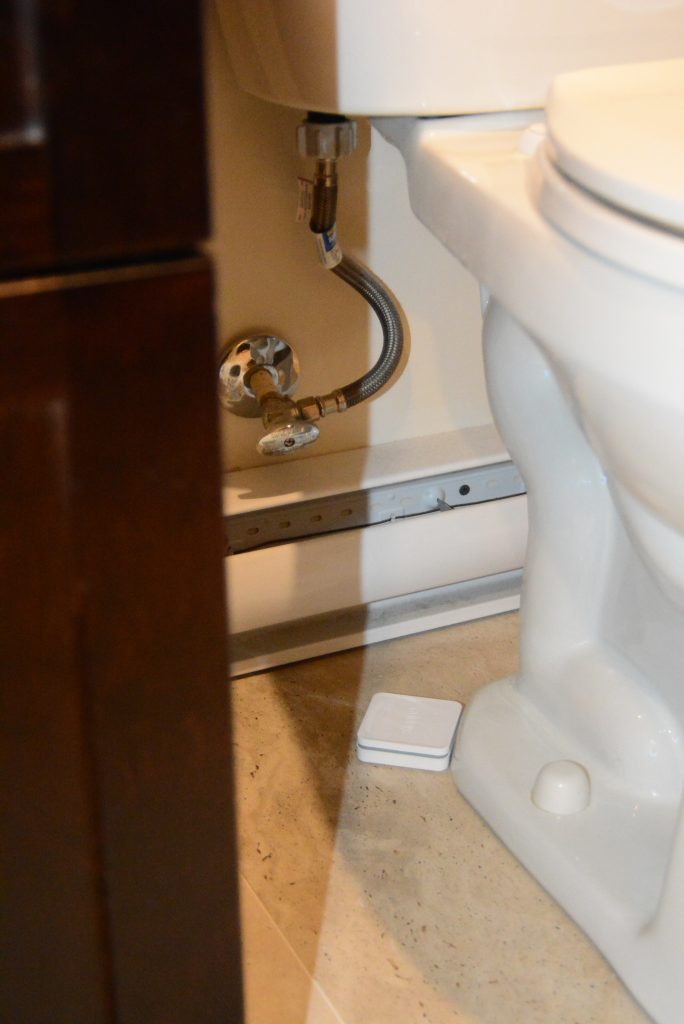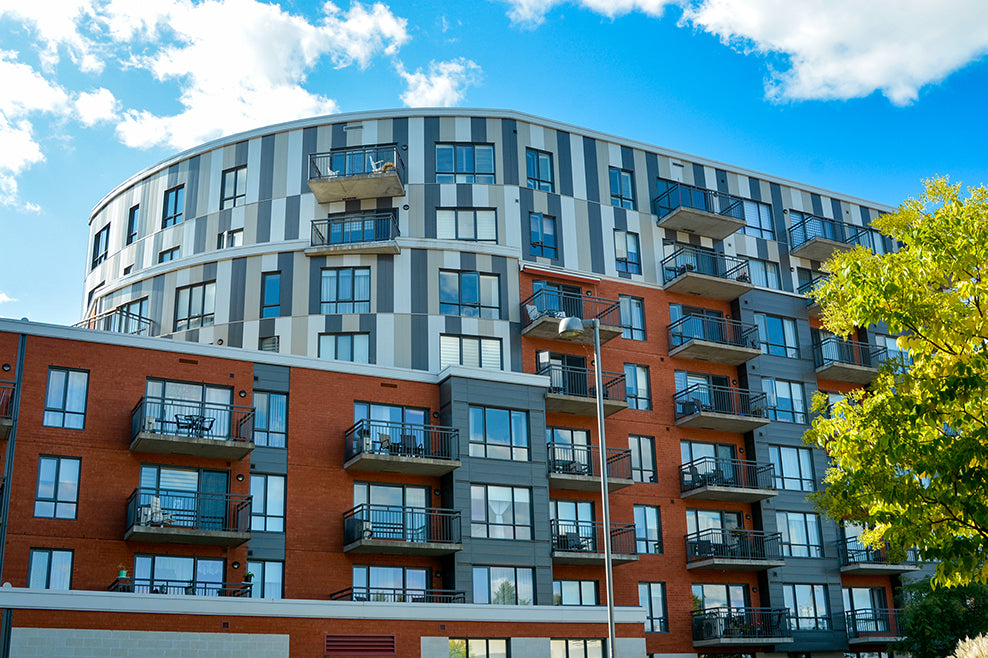The original version of this text was published in the Fall 2019 edition of Copropriété+ magazine (p. 100-102).
A dynamic and committed retiree, Mr. Gilles Dion is one of the co-owners at the residence Le Savignon. Like many people, he is aware of how expensive, complicated, and unpredictable water damage can be. Mr. Dion also knows that water damage can be avoided.
That's why in the spring of 2019, Lachine residents began the process of equipping their condo tower with a water damage protection system. Le Savignon condominiums are now equipped with a smart and stand-alone water damage protection system. How did the board proceed to choose to right product and obtain an approval rate approaching 98%? Here is how they processed, step-by-step.
The challenge
The project began as a result of two water damage that happened in the condo section of the Le Savignon residences. In both cases, co-owners had forgotten an open tap that had run for several hours. A clogged sink in the bathroom and the strainer in place in the kitchen sink caused significant overflows. The floors had to be changed, and major renovations were conducted while the occupants had to stay in a hotel. When declaring such damage to the insurer, the provident fund, and the co-owners' premium rise. Over time, the insurance company may even refuse to insure the building.
"Because of these incidents, installing a water damage protection system became a priority for us," says Dion.
Selection process
Initially, the condo syndicate board approached one of the co-owners, Mr. Gilles Dion, because of his plumbing knowledge. He was asked to act as a consultant and to research the different products available on the market.
After conducting extensive research and meeting with five companies offering water damage protection products and services, Mr. Dion prescreened two of the products for presentation to the board. It's during this meeting that the members chose Sedna, the system designed by Sinopé Technologies.
The board members then met with one of the representatives of the selected company to ask questions about the operation and use of the system.
Subsequently, the co-owners were surveyed individually or in small groups to confirm their needs and desires. They could also try the product which was installed in one of the condos. Thanks to these meetings, the selection criteria were confirmed. The price had to be competitive, and management would be done autonomously, without going through central management that adds monthly costs to the initial price of the product. One of the requirements was to avoid any wall device. "People end up forgetting what the switch is for and touch it by accident or curiosity," says Gille Dion. By doing this, they cut the water inlet and disrupt the system, "adds the former plumber.

The selection process ended when a representative from the selected company came to meet with the co-owners to answer their questions and provide them with more information on the Sedna system, as needed.
Coordinate the installation
As part of the selection process, the Sedna valve and the smart water leak detectors were installed in one of the condos. This essential step allowed residents to see that the installation of the complete system, including the valve and detectors, was quite fast and could take only an hour.
However, each condo is different and present unique features. The installation of the valve by a certified plumber could then take between 10 minutes and one hour, depending on the complexity of the plumbing.

Mr. Dion also advises visiting each apartment to note the particularities that will help to choose the right device and estimate installation costs by a plumber.

Also, Mr. Gilles Dion suggests to future users to thoroughly shop the plumber who will be in charge of installing the valve. Some plumbers will bill based on the number of apartments; others will take into account the installation time instead. When each home presents a different challenge, the cost can be complex to determine. "We were lucky. We had a plumber in our network who simplified the process. In our case, we had a price for a regular installation and another amount for more complex setups. This has facilitated our management," says Dion.
Bottom line
The main contact point of this project for Le Savignon, Mr. Gilles Dion was very satisfied. He described as "superb" the relationship he had with Sinopé Technologies’ team. He was even impressed by the efficiency of the system, as well as its robust and thoughtful design.
Perfect timing
In the Savignon case, the water leak detectors were installed in the apartments before the valve. While this step was underway, an alarm sounded. The sensor placed in the holding tank of the water heater of one of the co-owners had detected a leak! The device located in the locker of the condominium had just given up. It could have done a lot of damage before anyone noticed it. The timing was perfect.
About Sedna
What it is: smart and stand-alone water damage protection system
The starter kit includes 1 valve (3/4 or 1 inch) and 5 water leak detectors. Additional detectors can be added.
Where to buy: purchase directly from the manufacturer online (sinopetech.com) or in person.
For remote control: Neviweb app available for free in the App Store or the Google Play store. A professional management platform is also available.




Partager:
Save time and energy with connected thermostats
Sinopé Technologies at Montreal Fall Home Expo